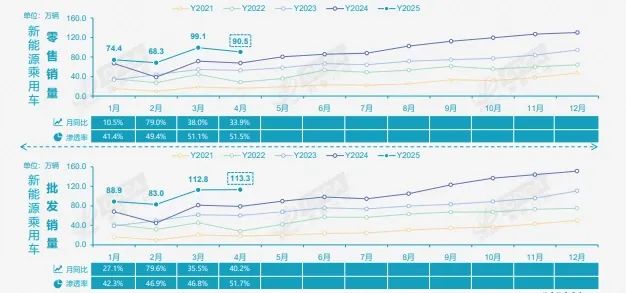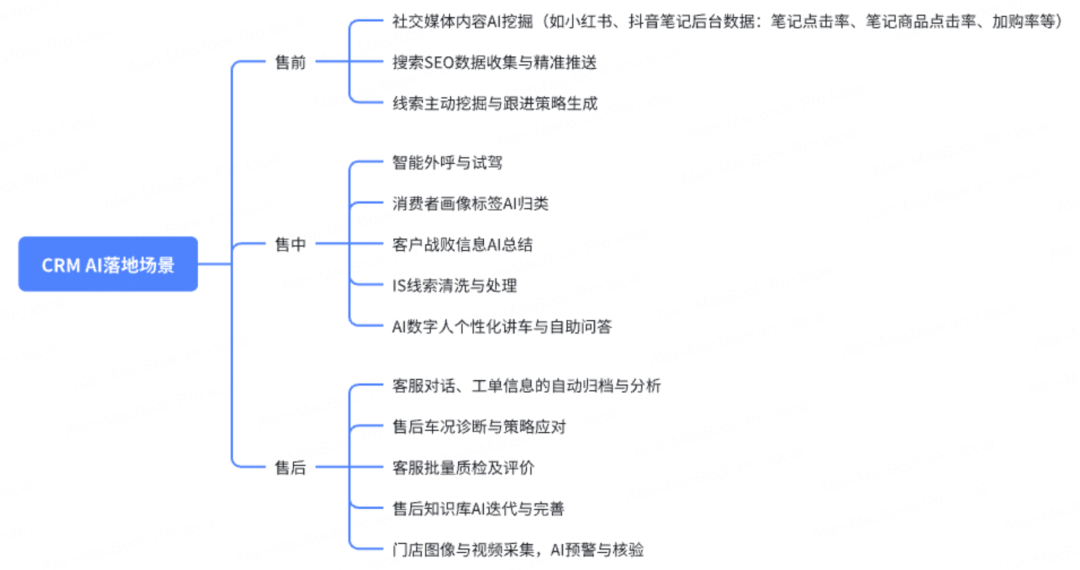AI+CRM: The Second Growth Curve for New Energy Vehicle Manufacturers
-
AI+CRM is no longer just a technological overlay but a key engine for building the second growth curve. This article will dissect this evolutionary path, exploring how AI deeply integrates with CRM to help automakers transition from 'traffic management' to 'user asset' strategies.

In the world of new energy vehicles, hardware is no longer the only battleground. Whether it's range, smart cabins, autonomous driving, or price wars, users ultimately vote with their feet.
Before casting their vote, users go through a complete journey: "seeing an ad → test drive experience → placing an order → after-sales service."
On this journey, whoever is smarter, more timely, and understands users better will win the market. Thus, AI+CRM (Customer Relationship Management) has become the second growth curve for automakers.
 Trend Data at a Glance
Trend Data at a GlanceAccording to data from the China Association of Automobile Manufacturers, the penetration rate of new energy vehicles is expected to exceed 50% by 2025. This means that one out of every two new cars will be a new energy vehicle. In this fiercely competitive environment, those who can better manage customer relationships through AI will survive the next round of elimination.

1. Pre-Sales: AI Makes "Finding Users" More Precise
The pre-sales competition for new energy vehicles is extremely intense. Advertising, test drive invitations, and showroom conversions—each step determines the final order volume. AI's role here is to help automakers "understand people better" and maximize lead conversion.
1. Potential Customer Identification and Intelligent Lead Scoring
In the past, sales relied on experience to judge customer intent. Now, AI can analyze multi-dimensional data such as social media content, website interactions, app behavior (e.g., repeatedly browsing range pages or checking configuration parameters), and test drive bookings to score customers.
For example: A new energy vehicle manufacturer's CRM system combines users' browsing behavior, geographic location (e.g., proximity to charging stations), and other factors to predict purchase intent, allowing sales to prioritize "high-score customers."
2. Personalized Recommendations and Marketing Automation
New energy vehicles offer numerous customization options: range versions, autonomous driving packages, charging solutions, and financing plans. AI can recommend the most suitable combinations based on user profiles.
For example: If a user frequently checks intercity charging stations on the app, AI might recommend a long-range version + free charging benefits, significantly improving conversion rates.
3. AI Outbound Calls and Virtual Advisors
Traditional outbound calls are often rejected, but AI-powered calls simulate natural conversations, improving efficiency while answering basic questions like "Can I schedule a test drive at home?" or "What are the subsidy policies? Is charging station installation free?"
NIO's AI outbound call pilot in some cities has freed up sales advisors' time, allowing them to focus on high-intent customers.
4. Smart Integration Between Showrooms and Apps
When a user browses a specific model in the app and visits a showroom, an AI virtual advisor proactively highlights key features and recommends promotions. This seamless online-to-offline integration enhances the user experience.
 Practical Methodology: Pre-Sales AI "Three-Step Approach"
Practical Methodology: Pre-Sales AI "Three-Step Approach"- Data Collection: Capture data from test drives, apps, vehicle systems, charging stations, and other touchpoints.
- AI Modeling: Use intent prediction/recommendation models to identify high-potential customers.
- Action Conversion: Trigger test drive invitations, financing plan promotions, and AI outbound calls.
2. After-Sales: AI Makes "Retaining Users" More Efficient
Buying a car is just the beginning; long-term experience is key. Battery degradation, charging inconveniences, or software bugs—any of these can become pain points for users. AI's value in after-sales is to help automakers "prevent issues proactively and respond quickly."
1. Smart Customer Service and Ticket Assignment
When a user reports "vehicle control failure," AI customer service can instantly identify the issue and provide solutions. If human support is needed, it automatically assigns the case to the nearest service center.
2. Predictive Maintenance and Health Management
AI analyzes vehicle system and sensor data to predict battery degradation, powertrain anomalies, and other issues, reminding users of maintenance before problems arise.
Tesla's system, for example, analyzes battery cycle data and proactively sends "battery health check reminders" to reduce complaints.
3. Customer Churn Prediction and Retention
AI analyzes charging frequency, app activity, and after-sales interactions to predict churn risk.
For instance, if a user's app usage drops over three months and their after-sales ratings are low, the system triggers a "retention mechanism," such as offering charging vouchers or inviting them to OTA experience events.
4. Emotion Recognition and Satisfaction Analysis
AI understands emotions. Through voice/text sentiment analysis, it detects whether users are angry, anxious, or indifferent, helping customer service adjust their approach.
NIO's community platform, for example, uses sentiment analysis to prioritize responses to "emotional posts."
 CRM AI Full-Scenario Overview:
CRM AI Full-Scenario Overview:
3. Trends and Comparisons: AI+CRM is Reshaping the Industry
Global Leader Tesla: Highly data-driven CRM system, capturing all touchpoints, with AI enabling end-to-end prediction and recommendations.
Domestic Innovators (NIO, XPeng, Li Auto, Xiaomi, etc.): Focus more on community-driven operations + AI assistance, such as NIO's community + smart customer service, Li Auto's OTA feedback analysis, and XPeng's intelligent test drive invitations.
Future Directions:
- Smart Cabins as the New CRM Entry Point: Vehicle system behavior data will feed into CRM, driving precision marketing and after-sales predictions.
- AI-Driven End-to-End Closed Loop: Break down data silos to achieve "full user lifecycle management."
- From Reactive Service to Proactive Operations: AI proactively "reminds, recommends, and reassures" to strengthen relationships.
4. AI+CRM is the Second Growth Curve for New Energy Vehicles
In an era of hardware convergence, the moat for new energy vehicles is no longer just smart cabins, autonomous driving, or battery technology—it's the ability to continuously leverage AI+CRM to maximize user value.
- Pre-sales: AI helps businesses find users more accurately.
- After-sales: AI helps businesses retain users long-term.
Whoever can make customers "arrive faster and leave slower" will emerge victorious in this fierce competition.
Food for Thought: In the next decade, automakers won't just compete on cars but on their relationships with users. If you were given an AI+CRM tool or marketing agent, which critical pain point in the user lifecycle would you address?
In the AI wave, those who take the first step may lead the next generation.
